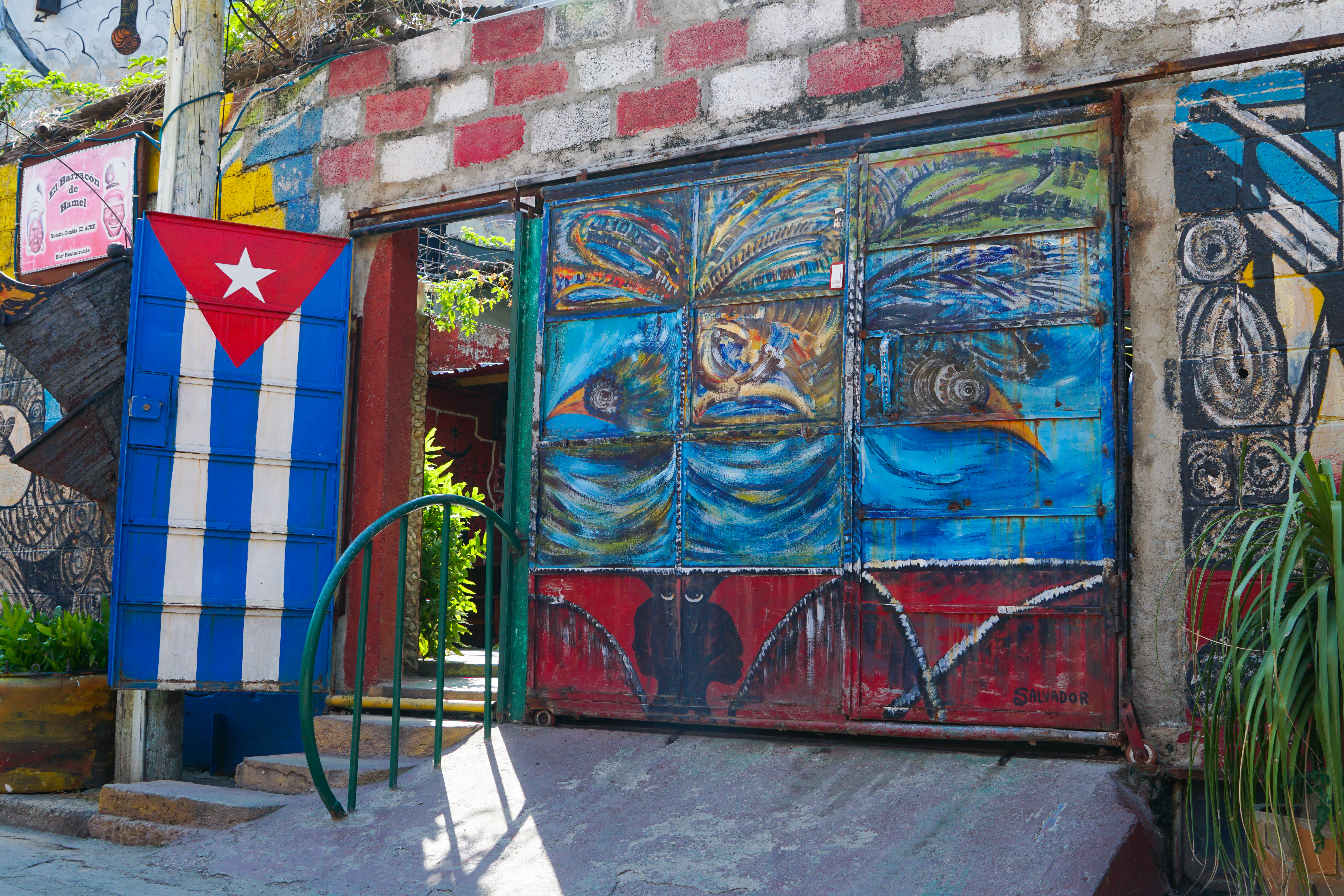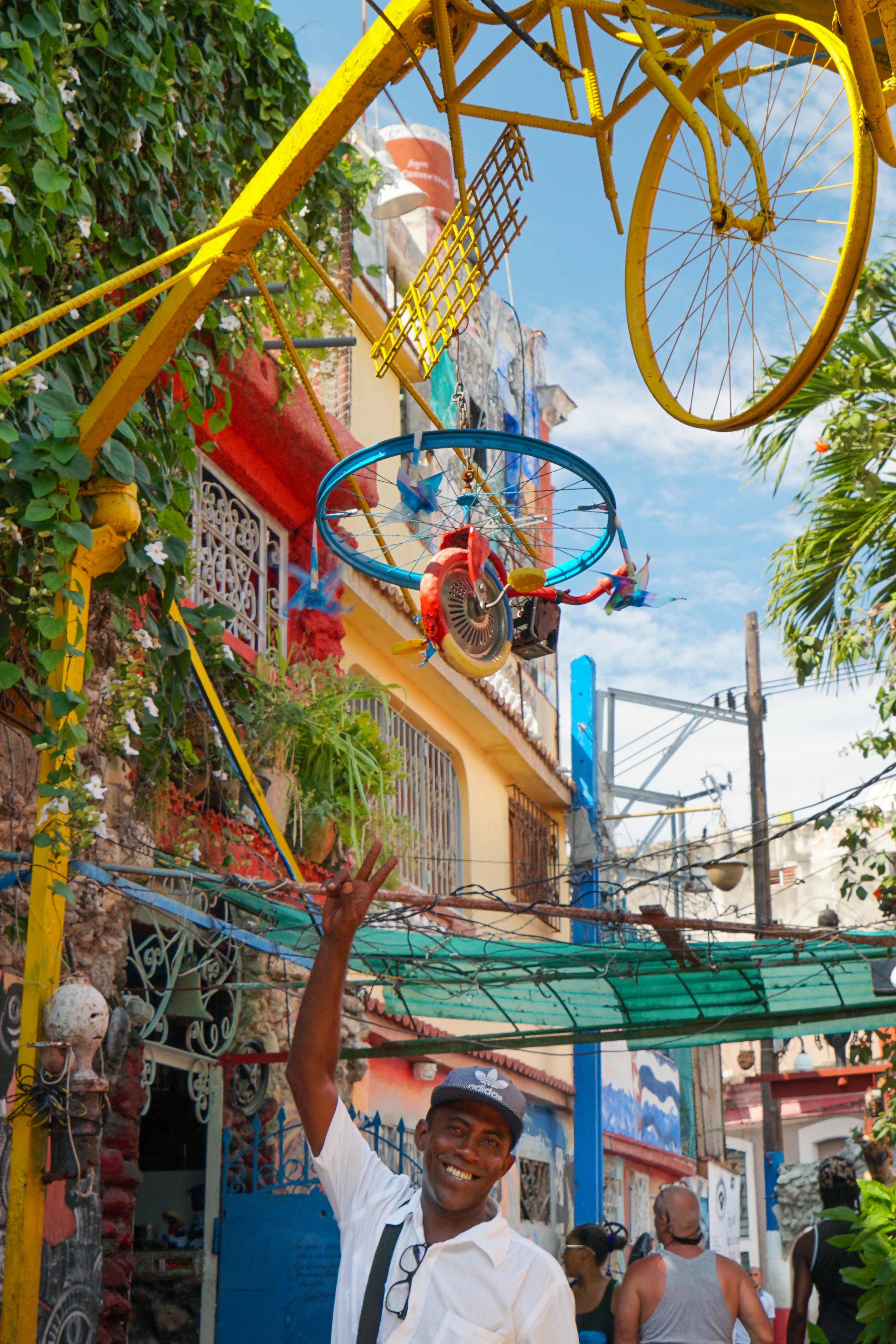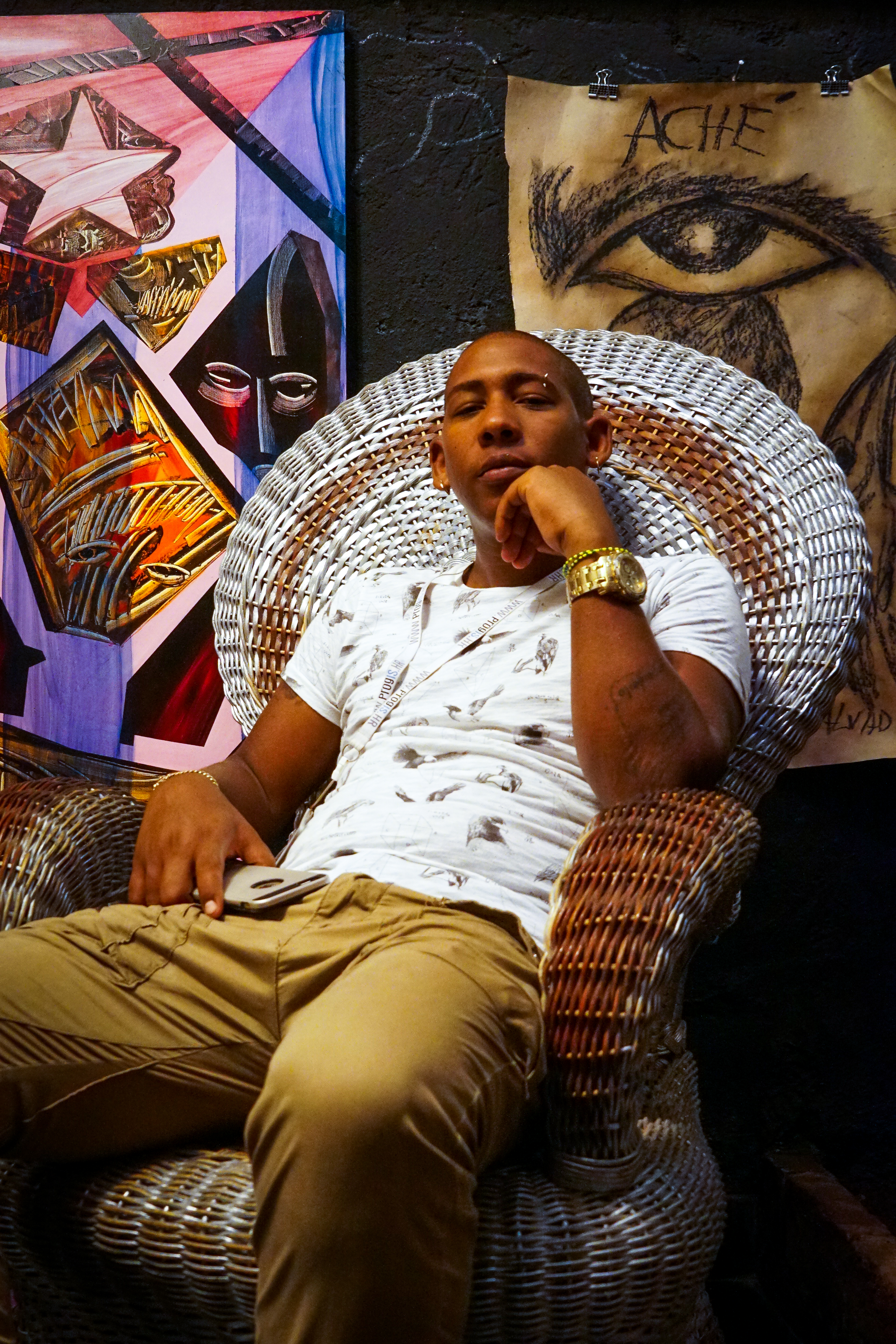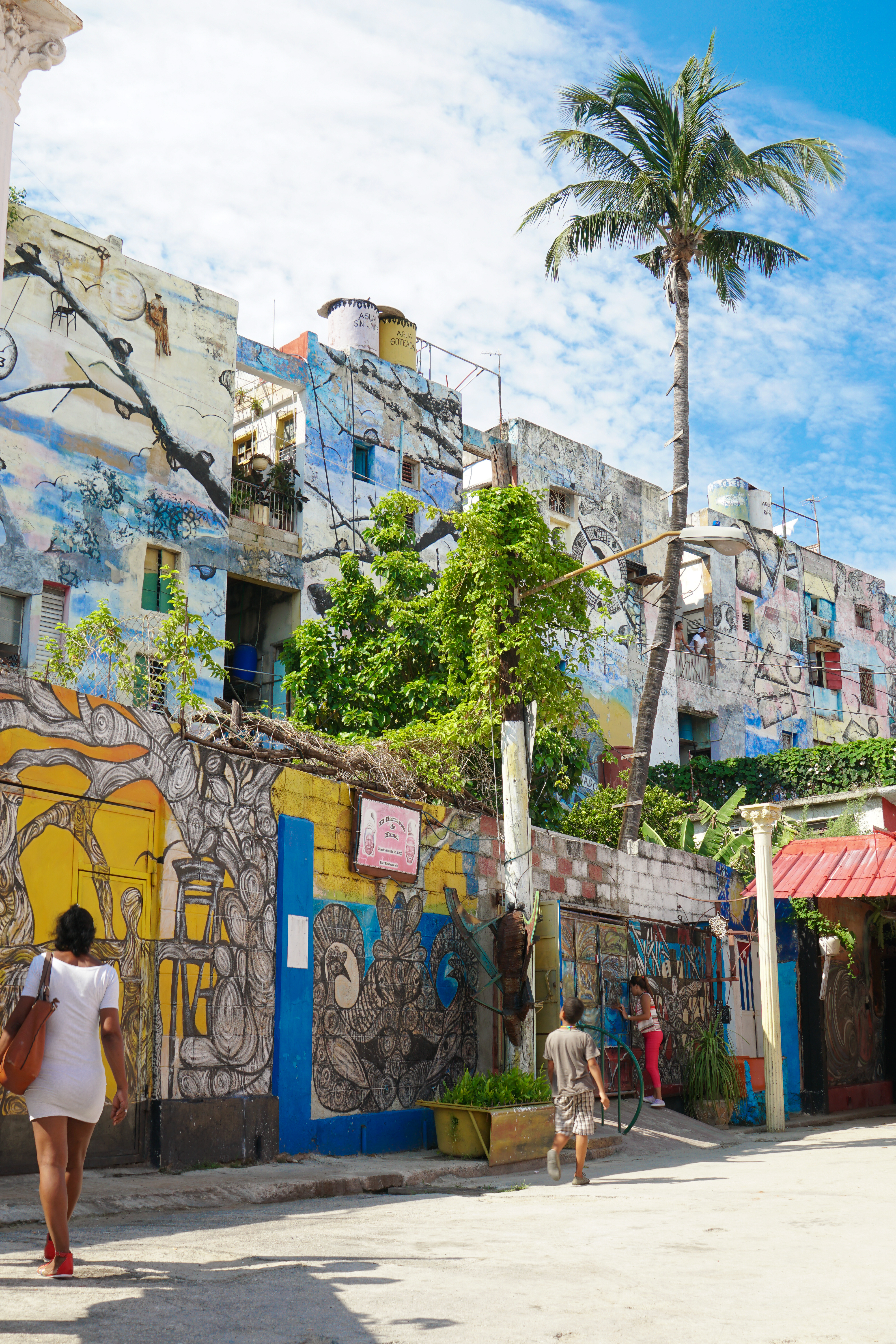Beauty in the Breakdown: Desolate Buildings or Abstract Magnificence?
By Alexandra Archuleta

Dilapidated buildings line the patchy streets of Havana, Cuba adding an alluring appeal to the background of the city. There’s an undeniable element of beauty to be discovered in a crumbling structure. At first glance, these ruins can leave an unnerving impression; but looking closer, I notice these buildings tell a story of a city that has become overridden by nature and overlooked by its régime. The city’s crumbling walls and downtrodden people seem to mirror Cuba’s downfall.
On the afternoon of the Fourth of July I paid a visit to Muraleando, a grassroots community art project that has brought wholesome life and colorful beauty to an underprivileged barrio in the outer city limits of Havana. This area may be deemed poor under economic standards, but the people and the environment itself are both visually and culturally rich.
Muraleando smells like the lingering smoke of world-famous cigars. Visitors can hear the sound of mint being muddled as bartenders make fresh mojitos in neighborhood bars. I walk past brightly painted clawfoot bathtubs that have been transformed into colorful, welcoming benches. A young man settled into one of these bathtubs for a midday nap. There are sculptures that tower high overhead Walking through the alleyways, I can feel the genuine passion in the air as proud artists use their best English to get my attention and show off pieces that they are enthusiastically proud of.

One of these proud artists gets my attention by pointing at a hanging sculpture made of up-cycled bicycle wheels saying, “Cuban drone, Cuban drone.” I snap a photo of him pointing at the sculpture, and he invites me to his gallery. I walk into a small 6-foot-by-6-foot room with a narrow spiral staircase leading to the second level, and tiny tile stairs leading down to an even smaller basement type room. The man gestures for me to take the tile steps down, and I find myself in a gallery with five other people. Paintings hang high and covering every inch of open wall space.

As I continue to make small talk and establish a relationship with the artists, I find them becoming increasingly comfortable with me despite my camera and outsider appearance. This is when I feel it’s appropriate to inquire about the main focus of my project, la libreta, or food rations booklet.
The laid-back, chatty atmosphere quickly takes a pivotal turn and one artist watchfully lights his cigar and without looking up warns me, “If you want to come and enjoy my country, that is fine; but please, please do not try to understand it.”
I put the lens cap back on my camera and headed back up the stairs. This moment is the first time I realize that the sensitivity of my topic hits close to home for the people directly affected by it. Where I find beauty in the decomposition of their neighborhood and culture, they find shame and ultimately resentment. The ruined buildings that line the streets of Havana are interesting nonetheless; but irrefutably tell a story of pain, misfortune, and disgrace.

